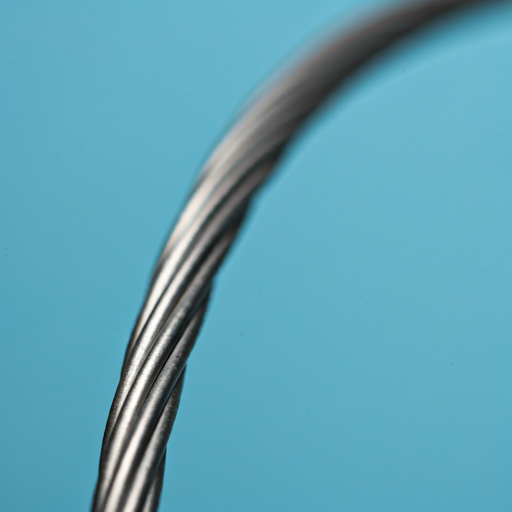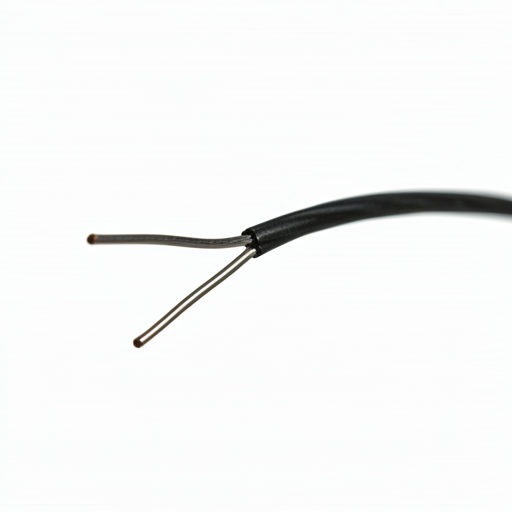Electrical wire gauges are important for safety and efficiency. 6 AWG wire is used in numerous commercial, industrial, and domestic applications. This article covers everything about AWG 6 wire, including its properties, applications, ampacity, and connectors. It will also evaluate the reliability of 6 AWG copper wire for electrical applications.
What Are 6 AWG Wires?
The “American Wire Gauge,” or AWG, standardises wire diameter measurement. While thinner than 2 AWG or 0 AWG, a 6 AWG wire is thicker than a 12 or 14 AWG wire. Because of its size, it can be utilised in branch circuits, sub-panels, and medium-to-high-power automotive projects.

The features of AWG 6 Wire
What you should know about 6 AWG wire might help you choose the correct item. Here are some of the best parts:
How big and long is the wire? 6 AWG lines are 0.162 inches wide. At this size, it’s flexible enough to take a lot of power.
This number tells you how much power a line can safely carry. In some situations, AWG wires can carry 55 to 75 amps.
Copper or metal is used to make most 6 AWG lines. It would be best to use copper wire (6 AWG) because it is conductive, doesn’t rust, and lasts a long time.
There are three main types of line protection: THHN, THWN, and XHHW. If a line has insulation, it can be used inside, outside, or when it’s wet.
Applications for 6-AWG The wire
Applications for 6 wire are numerous. The most widely used applications include:
Sub-Panels: Copper wire 6 runs sub-panels in shops and homes. The ampacity makes it safe to handle the load of energy.
Chargers for electric cars: Many Level 2 chargers need wires to handle much power.
Heavy-Duty Machines: Air conditioners, water heaters, and electric stoves are all heavy-duty machines with which this size of wire works well. It can handle the extra power that these devices need.
You want to connect solar panels to generators or battery banks, you can use 6 AWG wires. Because it is thick, it might be able to send stronger currents over short distances.
Applications in Automotive and Marine: These domains also use six AWG wires. Winches and car audio systems are examples of high-power accessories for which they can manage the electricity required.
Types of 6 AWG Wires
Different varieties of AWG 6 wire can be utilised for other tasks. Here are some famous ones:
- Solid 6 AWG copper wire is a single metal string. Stiffer and less bendable, this wire can’t move.
- Stranded 6 AWG wire is made by twisting many tiny copper or metal strands. It is easier to bend and fit in narrow spaces than solid wire.
- Insulated 6 AWG wires are either THHN or THWN. They are made for tubes, raceways, and other electrical needs.
“Cross-linked High Heat-resistant Wire” is “XHHW wire.” Home, business, and manufacturing electricity systems use it extensively. XHHW lines can be utilised underground and outside since they absorb more heat and water.
Why is copper wire 6 AWG the best?
Many arguments exist for using copper wire (6 AWG) instead of metal wire.
Copper moves electricity better than aluminium, so the same gauge can carry more power, improving electricity flow.
Copper lasts longer than metal because it rusts slower. This means it can be used long, especially in moist or open areas.
Copper wire is more flexible than aluminium wire, which is lighter. This could simplify setup in tiny rooms.
Copper lines outlast aluminium. Because they retain their traits, they are less likely to break down or cause difficulties.
6 AWG Wire Ampacity
The ampacity of the AWG wire depends on the installation conditions and insulation type. Typically, a 6 AWG copper wire can transport:
55 Amps: For regions close to machinery, attics, or other places with greater ambient temperatures.
When the wire is installed in conduits or raceways with normal operating temperatures, a current of 65 amps is obtained.
75 Amp: This is used for applications that require a wire with specific high-temperature insulation (such as XHHW or THHN).
Making the Right Choice 6 AWG wire connections
The correct connectors are necessary for safe and efficient electrical connections. The following are six types of AWG wire connectors:
- Lug connections are used to link the line to bus bars or terminals. They have different shapes, like rings and forks, and are joined together with bolts or screws.
- You can use wire nuts when you want to connect two or more 6 AWG. They’re simple to use and twist on, and they’re great for small sets.
- Crimp connections: These connections crimp the wire into a metal sleeve to make a strong, lasting link. They are often found in factories and car dealerships.
- Splice connectors: These connectors enable the non-twisting joining of two wires. They are commonly used to repair or extend the length of cables.
Anderson Powerpole connections: These connectors are easy to use and have many uses. They are widely utilised in battery systems and other applications where quick detachment is necessary.
How to Choose the Right Option 6 AWG Wire
Several influence factors AWG wire selection intended use, budget, and environment are something to consider:
Material:AWG copper wire is used for better conductivity and endurance. Although aluminium is less expensive, it is less effective.
Insulation Type: Several types of insulation are needed depending on the environment in which the wire will be placed. Use THHN for routine indoor use and XHHW for outdoor or underground installations.
Make sure the wire’s ampacity meets your device’s present requirements. Also, verify the insulation’s rating to ensure it can sustain the expected load.
Flexibility: Stranded wire is ideal for tasks requiring twisting and bending, while solid wire is ideal for permanent, straight runs.
Check that the wire satisfies safety regulations. Look for UL (Underwriters Laboratories) certification, which attests to the wire’s compliance with safety and performance requirements.
Tips and Best Practices for 6 AWG Wire Installation
Installing AWG 6 wire requires some basic electrical knowledge. Here are some guidelines:
Verify Local Electrical Codes: Always confirm local laws and codes before installing anything. Specific requirements must be followed when using and positioning six AWG wires.
Be Sure to Use the Correct Connections: Use the correct connections for 6 AWG wires to prevent short circuits and overheating and ensure safety.
Secure the Wire: Use conduit, raceways, or cable clamps to keep the wire safe and secure. This is especially important in places where the wire can be physically strained.
Proper Grounding: Verify that the Grounding is appropriate for safety. Grounding protects equipment and reduces electrical hazards.
Examine Before Use: Before installing the wire, check for damage or defects. Damaged insulation can lead to electrical fires and short circuits.

Conclusion
6 AWG wire is versatile and works in many electrical scenarios. The highest flexibility, amplifying power, and longevity are found in AWG copper wire. This gauge can wire a subpanel, electric car charger, or solar system. For safe and effective installs, know the ampacity of a 6 AWG wire and choose the proper connections. This article’s suggestions will help you create safe, effective, long-lasting projects.
FAQ’s
1. How many amps can an AWG wire handle?
Six-gauge wire can carry 55 to 75 amps, but this can change depending on the covering and how it is assembled. For example, an AWG copper wire protected with THHN can handle up to 65 amps daily, and the proper shielding can handle up to 75 amps in hot places.
2. Should I use 6 copper wire or metal wire?
Copper wire (6 AWG) runs electricity better, lasts longer, and doesn’t rust more than metal wire most of the time. Copper lines also last longer and can handle more power. But metal is cheaper and lighter, so it can be used in situations where saving money is important.
3. What kinds of coverings are there for 6 AWG wire?
Thermoplastic High-Heat-Resistant Nylon-Coated, Thermoplastic Heat- and Water-resistant Nylon-coated, or Cross-linked High-Heat-Resistant Wire is often used to cover six-gauge wire. People often use THHN indoors, but THWN and XHHW are better for wet or outdoor areas because they don’t soak up water.
4. Can I charge my electric car with 6 AWG wires?
Level 2 chargers, on the other hand, need lines with a high ampacity. 6 AWG wire can be used with them. The wire should have enough amps for your EV charger. Also, check the electrical rules in your area to make sure you’re following them.
5. What kinds of parts do I need to join 6 AWG wires together?
It depends on what you need the 6 AWG wire plugs for. Lug connections are often used to link wires to terminals. Crimp connectors make strong links, wire nuts hold wires together, and Anderson Powerpole connectors let you set up modular systems that are easy to disconnect. Choose links that can always handle 6 AWG wires and the load.
For more tips, keep visiting ImprovementOfHome.com.

